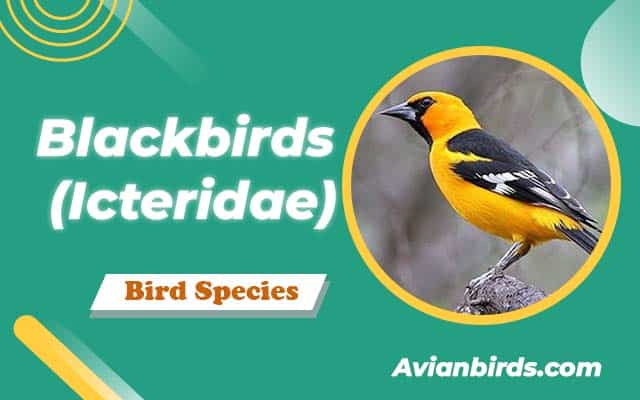Blackbirds (Icteridae) (With Pictures)
Did you know that the family of Blackbirds (Icteridae) is comprised of an astonishing variety of bird species in the United States? Are you ready to uncover the diversity of Blackbirds (Icteridae) with us as we explore unique species and their beautiful plumage?
1. Genus Agelaius
The genus Agelaius, part of the broader family of New World blackbirds and icterids, includes several remarkable species noteworthy for conservation efforts. encompasses a diverse group of Blackbirds known for their striking plumage and distinct characteristics. Let’s take a closer look at five notable species within the Agelaius genus: the red-shouldered blackbird, red-winged blackbird, tawny-shouldered blackbird, tricolored blackbird, and yellow-shouldered blackbird.
1.1 Red-shouldered Blackbird (Agelaius assimilis)
The red-shouldered blackbird is a visually stunning species with glossy black plumage and vibrant red highlights on its shoulders.

Found primarily in wetland habitats, this blackbird is known for its loud, melodic songs that fill the air during the breeding season.
1.2 Red-winged Blackbird (Agelaius phoeniceus)
The red-winged blackbird is one of the most recognizable blackbirds in North America. The male boasts a jet-black body with vibrant red shoulder patches, while the female showcases a more subtle brown coloring.
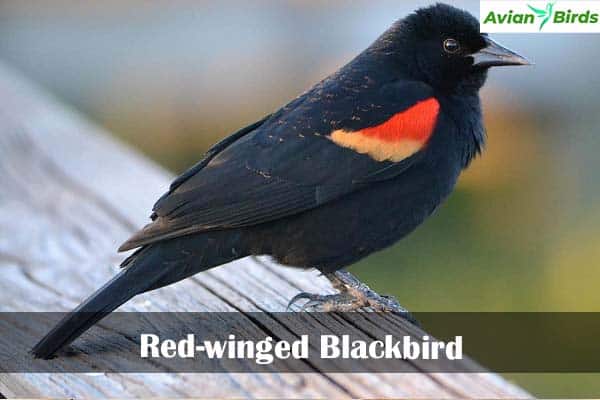
These adaptable birds can be found in a variety of habitats, from wetlands to grasslands.
1.3 Tawny-shouldered Blackbird (Agelaius humeralis)
The tawny-shouldered blackbird is a South American species known for its unique appearance. Its black plumage is accented by tawny-colored shoulders, creating a striking contrast.

This species generally resides in marshes and grasslands throughout its range.
1.4 Tricolored Blackbird (Agelaius tricolor)
The tricolored blackbird is a California-native species that exhibits a captivating blend of colors.

The male, possibly a part of the diverse family Icteridae or a grackle, features a black body with white wing patches and a bright red patch on its shoulder, illustrating the diversity within this group. Unfortunately, this species is currently facing conservation concerns due to habitat loss and declining populations.
1.5 Yellow-shouldered Blackbird (Agelaius xanthomus)
The yellow-shouldered blackbird is an endemic species to Puerto Rico and is listed as critically endangered.

The male showcases a black body with vibrant yellow shoulders, while the female exhibits a more subdued brown coloring. These blackbirds primarily inhabit wetland areas and are threatened by habitat destruction and invasive species.
2. Genus Agelasticus
The Blackbirds in the genus Agelasticus are known for their distinct features and vibrant plumage. Let’s explore three stunning species from this genus: the pale-eyed blackbird, unicolored blackbird, and yellow-winged blackbird.
2.1 Pale-eyed Blackbird (Agelasticus xanthophthalmus)
The pale-eyed blackbird, scientifically known as Agelasticus xanthophthalmus, is a visually striking bird characterized by its black body and pale yellow eyes.

Found in wetland habitats, this species is native to South America, particularly in countries like Argentina, Bolivia, Brazil, and Paraguay. The pale-eyed blackbird stands out with its beautiful plumage and unique eye color.
2.2 Unicolored Blackbird (Agelasticus cyanopus)
The unicolored blackbird, scientifically known as Agelasticus cyanopus, is a medium-sized blackbird species found in South America. It is known for its solid black plumage without any distinct coloration.

This species is found in various freshwater habitats, including marshes, lakes, and rivers, where it forages for food and nests in dense vegetation. The unicolored blackbird showcases the elegance of simplicity in its appearance.
2.3 Yellow-winged Blackbird (Agelasticus thilius)
The yellow-winged blackbird, scientifically known as Agelasticus thilius, is a visually striking bird with a predominantly black body and bright yellow patches on its wings. Endemic to South America, this species can be found in wetland areas, including marshes, swamps, and flooded grasslands.

The yellow-winged blackbird’s eye-catching plumage and distinctive wing coloration make it a captivating sight in its natural habitat.
| Species | Scientific Name | Habitat | Range |
|---|---|---|---|
| Pale-eyed Blackbird | Agelasticus xanthophthalmus | Wetlands | Argentina, Bolivia, Brazil, Paraguay |
| Unicolored Blackbird | Agelasticus cyanopus | Freshwater habitats | South America |
| Yellow-winged Blackbird | Agelasticus thilius | Wetland areas | South America |
3. Genus Amblyramphus
The genus Amblyramphus is home to a stunning species of Blackbirds known as the scarlet-headed blackbird (Amblyramphus holosericeus). These birds are truly a sight to behold, with their striking appearance and unique behavior.
3.1 scarlet-headed blackbird
The scarlet-headed blackbird is aptly named for its vibrant red head, which contrasts beautifully with its black body. The males of this species have an unmistakable scarlet plumage, while the females display a more subdued brown coloring.

These blackbirds are medium-sized, measuring around 21 cm in length, and are known for their distinctive calls that can be heard echoing through their marshy habitats. They primarily inhabit wetland areas in South America, including the marshes, swamps, and grasslands of Argentina, Paraguay, Bolivia, and southern Brazil.
Scarlet-headed blackbirds, a part of the family Icteridae, are highly social birds and are often found in large colonies or flocks, much like cowbirds and grackles. They are known for their active and noisy behavior, particularly during the breeding season. During this time, the males will engage in elaborate courtship displays to attract the females. These displays involve puffing up their feathers, spreading their wings, and singing loudly to establish their territory and attract a mate.
As for their diet, the scarlet-headed blackbirds primarily feed on seeds, insects, and small invertebrates. They use their specialized bill to forage for food in the marshy vegetation, digging out insects or plucking seeds from plants.
Conservation Status
The scarlet-headed blackbird is listed as a species of Least Concern on the IUCN Red List, meaning that it is not currently facing any major threats to its population. However, like many other bird species, habitat loss and degradation due to agriculture, urbanization, and pollution pose potential risks to their long-term survival.
| Bird | Scientific Name | Habitat | Conservation Status |
|---|---|---|---|
| Scarlet-headed Blackbird | Amblyramphus holosericeus | Wetlands in South America | Least Concern |
Efforts are being made to conserve and protect the wetland habitats that these beautiful blackbirds, including species like the oriole and grackle, rely on for their survival. By raising awareness and implementing sustainable conservation practices, we can ensure that future generations will have the opportunity to admire the scarlet-headed blackbird and all its natural splendor.
Other Unique Blackbirds
While the Blackbirds in the Agelasticus and Amblyramphus genera certainly captivate with their distinctive features, there are numerous other unique species within the Icteridae family worth exploring. Each of these blackbird species, from the widespread New World blackbirds to the more localized grackles and cowbirds, showcases remarkable characteristics and inhabits different regions across the Americas.
4. Genus Anumara
4.1 Forbes’s Blackbird (Anumara forbesi)

One intriguing blackbird species is the Forbes’s Blackbird (Anumara forbesi), native to Brazil. Known for its striking black plumage and bright yellow eyes, the Forbes’s Blackbird is a captivating sight.
5. Genus Chrysomus
5.1 Chestnut-capped Blackbird
Including the Chestnut-capped Blackbird, an example of the vibrant diversity found in the family Icteridae, along with species like the bobolink and troupials.

(Chrysomus ruficapillus, a member of the diverse family Icteridae, illustrates the wide range of species within this group., known for being part of the icterids family, showcases the diversity within this group of birds.)
5.2 Yellow-hooded Blackbird (Chrysomus icterocephalus)
The Yellow-hooded Blackbird (Chrysomus icterocephalus), the genus Chrysomus presents two distinctive blackbird species.

The Chestnut-capped Blackbird showcases a deep chestnut-colored cap atop its head, while the Yellow-hooded Blackbird boasts a vibrant yellow hood against its deep black plumage.
6. Genus Curaeus
6.1 Austral Blackbird (Curaeus curaeus)

The Austral Blackbird (Curaeus curaeus) is another remarkable species found in South America. With its glossy black feathers and bold orange eyes, the Austral Blackbird stands out in its natural habitat.
7. Genus Dives
7.1 Melodious Blackbird (Dives dives)
The Melodious Blackbird is a bird with soft, shiny black feathers. Both male and female birds look the same.
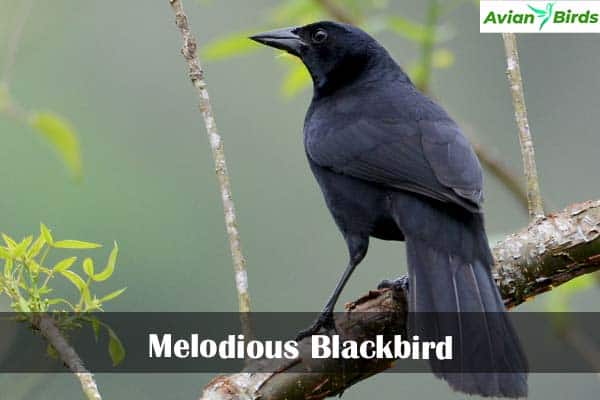
You can find this bird in Central America. It likes to live in places that are kind of open and kind of wooded, like edges of forests, farms, gardens, and fields that are close to woods.
7.2 Scrub Blackbird (Dives warczewiczi)
The Scrub Blackbird is a bird that is all black with a hint of blue shine on its feathers. Both the boy and girl birds look alike.

These birds make their homes in places that are wide open or have low trees, like in the western parts of Ecuador, Peru, and the southwestern part of Colombia.
Check Our Previous Articles:
8. Genus Euphagus
8.1 Brewer’s Blackbird (Euphagus cyanocephalus)
Male Brewer’s Blackbirds that are ready to mate look shiny black with a hint of purple on their heads and a bit of green on their bodies. They also have bright yellow eyes. When they’re not ready to mate, the males have a light-colored line above their eyes.
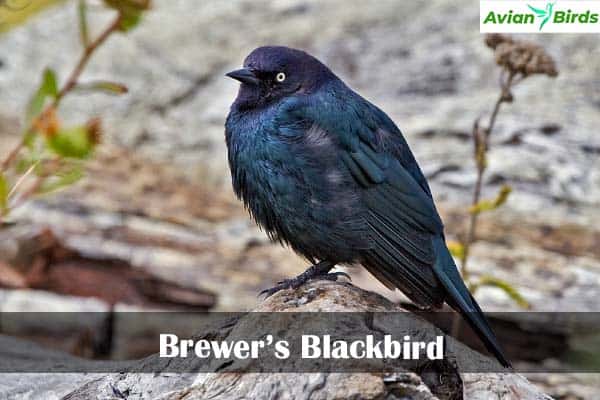
Female Brewer’s Blackbirds are dark brown with a slight purple shine on their heads and a little green on their bodies. They also have a line across their eyes that looks darker.
These birds like to live in open spaces where there’s a lot of room, like fields, farms, parks, and even places where lots of people live. You can find them in many parts of the United States, Mexico, and the lower part of Canada.
8.2 Rusty Blackbird (Euphagus carolinus)
Male Rusty Blackbirds that are ready to have babies look shiny black with a green glow. When they’re not ready to have babies, they have a light brown stripe above their eyes, a rusty-brown back of the neck, top of the head, and around the ears, and their feathers have rusty tips. Their bellies are light brown with black stripes, and their backs are mostly brown but with a black bottom, tail, and wings. No matter what, they always have yellow eyes.

Female Rusty Blackbirds are gray with a little bit of rusty color on the edges of their feathers, light brown stripes above their eyes, brown heads and chests, and dark backs with a bluish-green shine.
These birds live in many places in North America where it’s wet and woody, like swamps, bogs, by the water, in wet forests, and also in places people have changed, like farms and fields.
9. Genus Gnorimopsar
9.1 Chopi Blackbird (Gnorimopsar chopi)
Chopi Blackbirds are birds that have feathers that shine and look all-black.
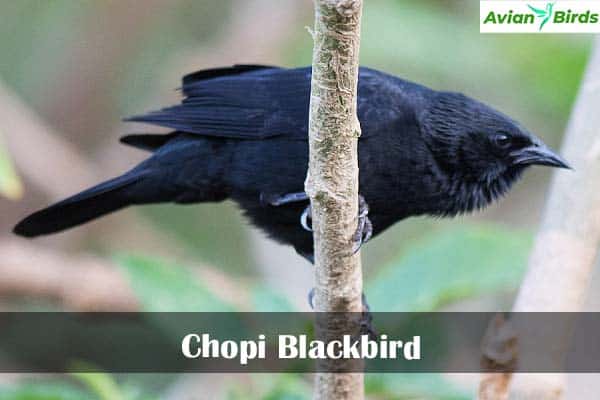
You can find these birds near the edges of forests, in woods, in big open grassy areas, savannas (which are like grasslands with some trees), and places where people grow food. They live in a big part of the middle and eastern side of South America.
10. Genus Nesopsar
10.1 Jamaican Blackbird (Nesopsar nigerrimus)
Jamaican Blackbirds are special birds that are completely shiny black. The female birds look just like the male birds.
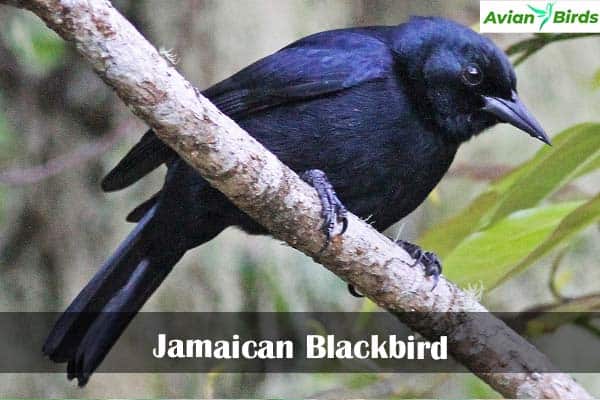
These birds live in very wet forests high up in the mountains and also in wet woods. They are only found in Jamaica, which means they don’t live anywhere else in the world.
11. Genus Oreopsar
11.1 Bolivian Blackbird (Oreopsar bolivianus)
The Bolivian Blackbirds are birds that are mostly black with brown on their wings.

You can find them in places where people grow crops, in woods, among cactus plants, in dry, bushy areas, and on farms that are in the dry valleys of the Andes mountains in Bolivia.
12. Genus Xanthocephalus
12.1 Yellow-headed Blackbird (Xanthocephalus xanthocephalus)
The bird you’re talking about is called the Yellow-headed Blackbird.
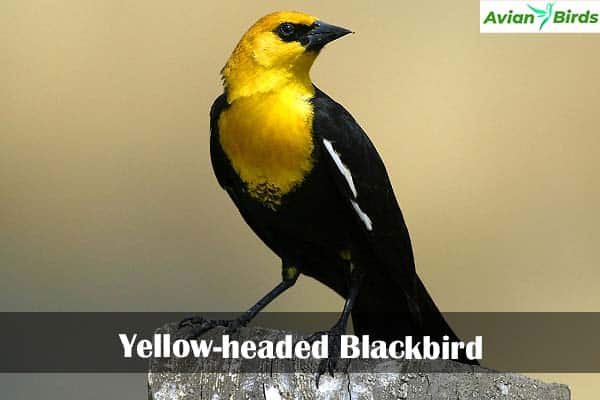
Male Yellow-headed Blackbirds are simple blackbirds but they have a cool white stripe on their wings and a bright yellow head, neck, and chest that really stands out.
Female Yellow-headed Blackbirds look more plain with dark brown bodies and a not-so-bright yellow chest. Their heads have a mix of black and yellow patches.
| Genus | Common Name | Scientific Name |
|---|---|---|
| Anumara | Forbes’s Blackbird | Anumara forbesi |
| Chrysomus | Chestnut-capped Blackbird | Chrysomus ruficapillus |
| Chrysomus | Yellow-hooded Blackbird | Chrysomus icterocephalus |
| Curaeus | Austral Blackbird | Curaeus curaeus |
| Dives | Melodious Blackbird | Dives dives |
| Dives | Scrub Blackbird | Dives warczewiczi |
| Euphagus | Brewer’s Blackbird | Euphagus cyanocephalus |
| Euphagus | Rusty Blackbird | Euphagus carolinus |
| Gnorimopsar | Chopi Blackbird | Gnorimopsar chopi |
| Nesopsar | Jamaican Blackbird | Nesopsar nigerrimus |
| Oreopsar | Bolivian Blackbird | Oreopsar bolivianus |
| Ptiloxena | Cuban Blackbird | Ptiloxena atroviolacea |
| Xanthocephalus | Yellow-headed Blackbird | Xanthocephalus xanthocephalus |
| Xanthopsar | Saffron-cowled Blackbird | Xanthopsar flavus |
Final Thoughts:
Blackbirds are a cool group of birds that live all over the United States. They come in many types, like orioles and grackles, and have lots of different colors and special things about them that make people love watching them. The red-winged blackbird is one famous kind because it looks really bright and pretty.
When we learn about all the different blackbirds, we understand better how they live and what they need. This helps us take care of them and make sure they stay around for a long time. We work to keep their homes safe, like the places where they eat and build nests because they’re really important for nature to stay healthy.
Frequently Asked Questions
Q1. What are the characteristics of the Icteridae family?
Icteridae are known for their diverse vocalizations, iridescent plumage, and omnivorous diet.
Q2. Are Icteridae carnivores?
No, Icteridae are not strictly carnivorous; they have an omnivorous diet, consuming both plant matter and small invertebrates.
Q3. What is the habitat of the Icteridae?
Icteridae inhabit a variety of environments, including forests, grasslands, marshes, and urban areas, depending on the species.
Q4. Is grackle an icterid?
Yes, grackles belong to the Icteridae family, characterized by their sleek black plumage and distinctive calls.

